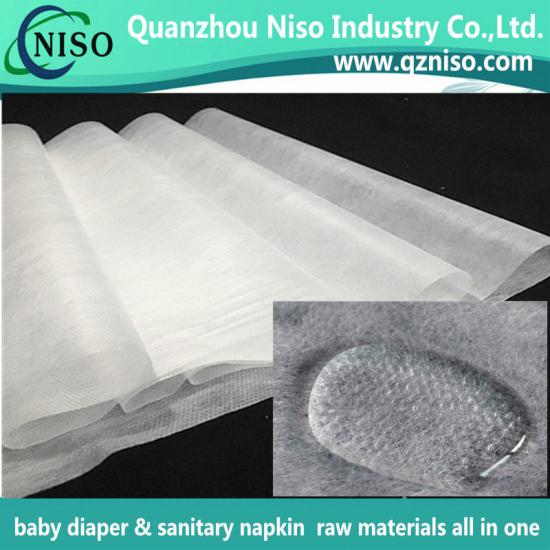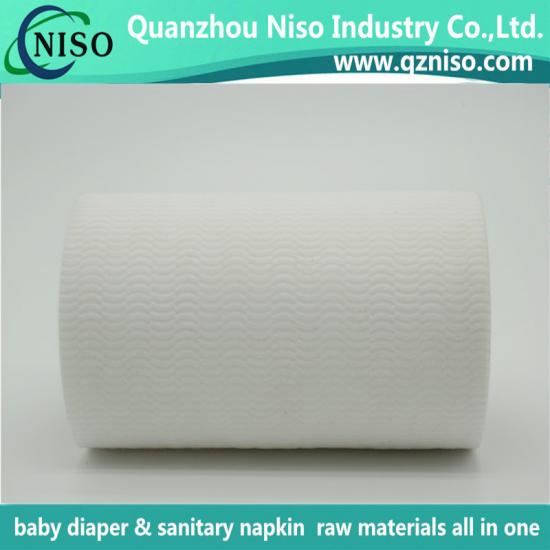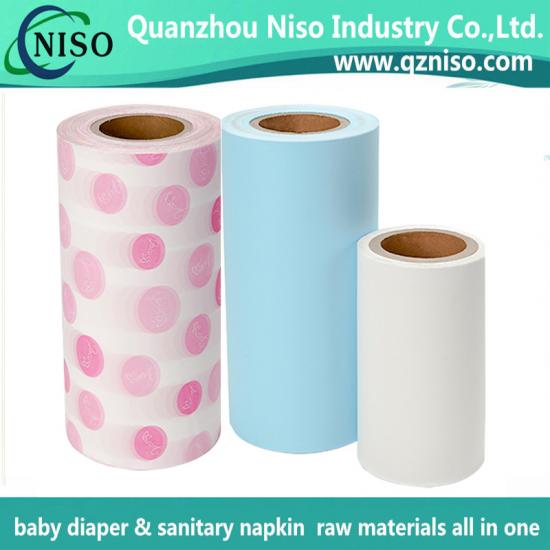One of the biggest weight loss success stories in the consumer markets is the disposable diaper. In the past decade, diapers have gone from thick and bulky devices loaded with fluff pulp to a shadow of their former selves, thinner yet more absorbent than ever before. Driving thinness are advances in core technology, which have lessened the amount of fluff pulp and increased the amount of superabsorbent polymer, which can absorb up to 800 times its weight in liquid, pulling urine from baby’s skin. These new diapers are not only thinner but more comfortable than ever before. This thinness has been driven by increasing superabsorbent: fluff pulp ratios within the diaper core. In 1985, the pulp-to-SAP ratio was 28:6 grams. By 2010, the ratio had evened out at 12:12 grams and has since gotten even lower. This trend has been driven by a consumers’ need for a thinner diaper and aided by more attractive SAP prices as well as technological developments by diaper suppliers and manufacturers alike. The thin diaper not only creates a more comfortable product for the baby to wear, it also lowers freight costs, opens up more shelf space and is more environmentally favorable overall. In terms of low or no pulp options, the two most well-known of these technologies—on the commercial front—are probably Pampers DryMax premium diapers, which use a limited amount of curly fluff pulp fibers, and Drylock Technologies, a European private label diaper maker that reportedly makes a completely pulp free core where the SAP is encapsulated between two layers. Drylock, led by former Ontex leader Bart Van Malderen, contains SAP within two small pockets formed by a combination of two layers kept in place with a low amount of thermoplastic materials. These bonds are designed to allow controlled and gradual loosening when SAP are swallowed and expand. This design expands SAP volumes, avoiding a reduction in performance thanks to pressure increases.
Pampers DryMax continues to be a leading branded diaper worldwide, while Drylock diapers, which are primarily sold as a private label brand, continue to grow throughout Europe. However, industry experts say the absence of pulp in the diaper is not as important as is the thinness of the overall product. In fact, Huggies’ latest generation of diapers are as thin as DryMax and reportedly contain about the same level of pulp but maker Kimberly-Clark has not been outspoken about the core technology. Instead, its marketing efforts have focused on softness and improved fit. From a technological standpoint, however, suppliers throughout the supply chain continue to offer ways to redesign the core that use little or no fluff pulp. For adhesive maker Bostik, determining how a low or no pulp core works is crucial to its success in the market, according to marketing manager Courtney Korselt. “We are always looking at the full solution and we are focused on how our adhesives work well with a standard core or with cores with higher SAP ratios. It is really important for us to be in touch with what is going on in the market.” Realizing that a change was coming within the elements of diaper design, Bostik began collaborating with SAP supplier BASF to gauge the interaction between the adhesive, the SAP and the other materials within the core. The result of the collaboration is a core design that uses SAP and an adhesive in a core structure that is completely pulp-free. This technology is not fully commercialized but is a part of the overall core learning efforts that Bostik has made to better support customers as they move from 50:50 SAP ratios to pulp-free diapers. Korselt explains that the use of pulp or lack thereof varies by geographies. In mature regions, the use of pulp free diapers has slowed with the exception of Drylock but in Asia there are many more interesting and thin products. Most of these are laminate structures that use adhesives or they are a compound core-type structure that can be assembled simply.
SAP’s The Word SAP manufacturers like Evonik have obvious motivation for upping the SAP content in absorbent cores. Many of them have invested ambitiously in recent years and they are now looking for new ways to move that capacity. Manufacturers are offering interesting new technologies and competitive pricing to increase SAP’s role in the diaper core. In November, Evonik announced a new technology—developed in partnership with a small engineering company—to make a laminate structure combining layers of superabsorbents and nonwovens to serve as an absorbent core in hygiene products. This unique structure allows the diaper core to absorb and distribute fluid more quickly than competing structures. According to Markus Henn, global director, application technology for Evonik, the laminate is flexible and expandable in two dimensions. “This results in a unique structure so basically the laminate has two nonwoven layers and a SAP is placed in a compartment between the two,” he adds. “The specific technology that we are using is elastic fibers in between the nonwoven layers that resembled small pockets containing the SAP.” The structure gives the diaper core a high level of stability. The elastic fibers or strands stick to the nonwovens and form an open cell structure. This ensures that the superabsorbent particles remain at the place where they are needed but also keeps the adhesive from infringing on the SAP properties. Therefore, the diaper is considerably more efficient—rewetting is significantly reduced while wearer comfort is enhanced considerably. In developing the product, which Evonik hopes to license to diaper makers, the company ran tests on a number types of nonwovens and even some tissue materials. Henn says the type of nonwoven used depends upon the use of the final product. “We have seen some indication of what types of nonwovens work or work better but we don’t really see too many limitations on what should be used,” he says. “The technology really allows the user to finetune the absorbent core and use the materials best suited for the application.”
The result is an ultrathin, yet soft and absorbent core, in which the superabsorbent granules are firmly “embedded” in the middle layer without the use of hot melt. At the same time they are well distributed without the preceding step of a patterned SAP feeding. In conventional diaper manufacturing this is a costly and demanding part of the process. The middle layer—similar in kind and functionality to “ADL” layers in conventional products—is bonded between the outer PP-based carrier and cover layers, and research has shown a better immobilizing function of SAP granules, both in dry and wet state, and a decreased tendency for gel blocking. When unbonded, the SAP granules enter the big pores of the embedding layer.
Diaper machinery manufacturer
Fameccanica has also committed to thinner diaper technology with a number of new forming technologies that reduce SAP content in the core. Among these is Hexacore, a solution for an entirely fluffless core suitable for application in baby diapers, heavy and light incontinence as well as for feminine hygiene pads. This Fameccanica patented structure, with expandable cells, enables the superabsorbent material to expand significantly inside the absorbent core. Also, the possibility to use differentiated glue types makes it possible to create preferential directions for expansion across the cells and to manage core integrity levels accordingly.
On the lower pulp front, Fameccanica offers a trio of solutions for its customers to use thin cores. H-forming is the re-engineered forming system with a perfect flow distribution and optimal SAP/fluff mix with ratios of up to 50/50 offering pad integrity and weight control. The H-forming system is the standard forming system for machines up to 600 ppm. The U-forming system, which is capable of producing ultrathin absorbent cores with SAP content higher than 70%, is the standard forming system for the company’s high-speed baby diaper machines. The third technology uses intermitten SAP application to provide the advantage of targeting the amount of SAP in the middle of the diaper. This works in combination with the Fameccanica Optisap 700 loss-in-weight dosing system saving on average two grams per diaper.n











 IPv6 network supported
IPv6 network supported